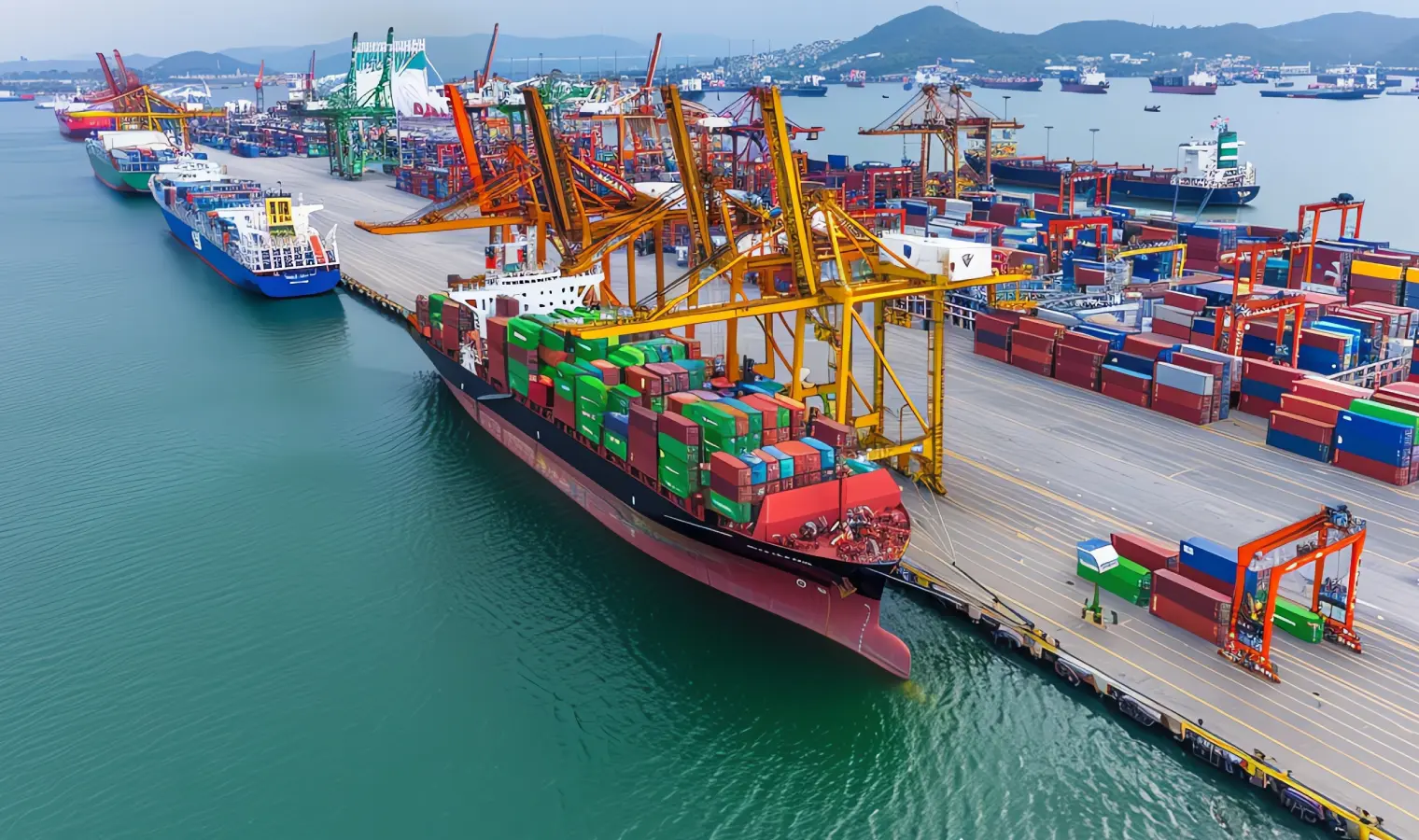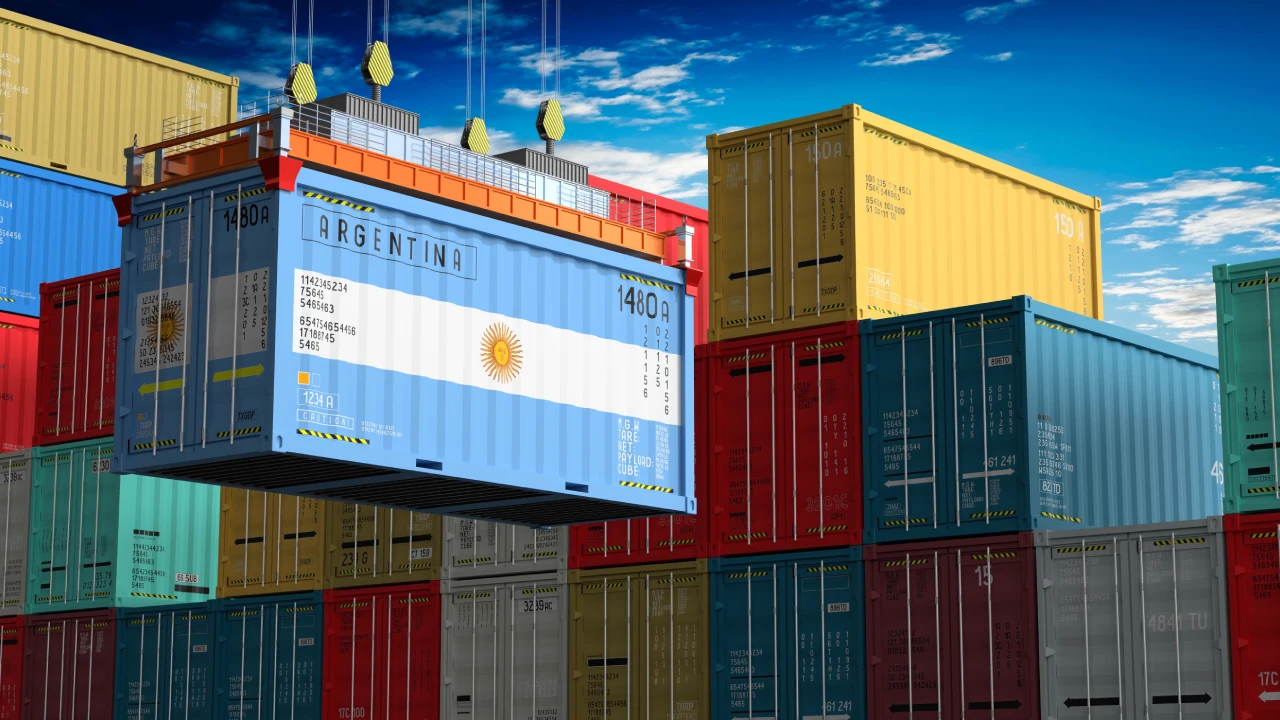
Key Takeaways
- Customs duties are taxes imposed by a government on goods imported into a country
- They are calculated based on the product’s HTS code, customs value, and country of origin
- Import tariffs generate government revenue and protect domestic markets by increasing the cost of foreign goods
- The Importer of Record pays customs fees
- New US tariffs on steel, aluminum, and derivative products impact import costs. Canada and Mexico also introduced retaliatory tariffs
International shipping is a great way for business owners to grow their customer base and boost revenue. However, navigating tax and customs regulations can be challenging, as non-compliance may lead to delayed shipments or costly fines.
This article explores the definition of customs duty, how import duties are calculated, who pays the tariffs on imported goods, and the latest updates on the United States import tariffs.
Importing goods to the USA can be complicated due to complex regulations and customs taxation. Atlantic Project Cargo’s customs clearance services make imports easy and stress-free. Our licensed customs broker will assist you during the process and help with duties and taxes.
Calculate Import Duty in Minutes!
What are Import (Customs) Duties?
Import duty is a tax imposed on goods brought into a country and collected by customs authorities. The amount is typically based on the product’s value. Depending on the context, import duties may also be called customs duties, import taxes, or import tariffs.
Customs duties serve two key purposes:
- Revenue generation to support government operations
- Market protection by making foreign goods more expensive. Duties give locally produced goods a competitive advantage
In some cases, high customs charges may also be used as a political or economic tool against specific countries.
Rates vary based on trade relations. The general rate applies to countries with normal trade relations, and the special rate is applicable to countries that are not developed or are eligible for an international trade program.
How are Import Duties Calculated?

Customs duties are calculated based on several factors, primarily the goods’ classification, value, and country of origin. Here is a detailed breakdown of how they are determined.
1. Classification of Goods
Every imported item is assigned a Harmonized Tariff Schedule (HTS) code, a standardized 10-digit number that identifies the type of product. The US International Trade Commission (USITC) maintains the HTS database, which allows you to search for the correct code for a specific item.
The HTS code corresponds to a specific duty rate, expressed as a percentage of the customs value. Rates vary widely depending on the product and its origin. Some goods may also have a specific duty (e.g., $ per unit) or a compound duty (a combination of percentage and specific amount).
For example, HTS code 3303.00.30 covers perfumes and toilet waters containing alcohol and indicates that there is no import duty on perfume from France.
2. Customs Value
The duty is also calculated based on the CIF value (cost, insurance, and freight), which includes the customs value of the goods (usually the transaction price) along with shipping and insurance costs.
3. Country of Origin
The duty rate can be affected by trade agreements. Goods from countries with free trade agreements (like Canada or Mexico under the USMCA) might qualify for reduced or zero duties, while goods from other countries face the general rate. Additional tariffs may apply due to trade policies, e.g., Section 301 tariffs on Chinese goods.
4. Additional Fees
Beyond the standard duty, importers may pay a Merchandise Processing Fee (MPF), typically 0.3464% of the customs value (with a minimum of $32.71 and a maximum of $634.62 per entry), and, for informal entries under $2,500, a flat fee may apply. Harbor Maintenance Fees (HMF) might also apply for shipments via sea (0.125% of the value).
Example Calculation
Let’s say you are importing 100 leather wallets from Italy into the US.
- HTS Code
Leather wallets fall under HTS code 4202.31.6000 (wallets with an outer surface of leather). The general duty rate for this code is 8% - Customs Value
The invoice shows the wallets cost $20 each, so the total value is $2,000. Shipping and insurance to the US port add $200, making the CIF value $2,200 - Apply Duty Rate
Duty: 8% of $2,200 = $176 - Additional Fees
MPF: 0.3464% of $2,200 = $7.62, but since this is below the minimum, you’d pay $32.71 instead - Total Cost
Duty ($176) + MPF ($31.67) = $207.67 in import duties and fees, on top of the $2,200 customs value
Note that this is a simplified example. Additional factors like trade remedies or specific entry requirements could adjust the final amount of the customs tax. For precise calculations, importers may contact our certified customs broker for help.

Duty vs Tariff vs Tax: The Key Differences
We have already found out what import duties are and how they are calculated. Let’s explore what import tariffs and taxes are.
What is a Tariff?
Tariffs are a specific type of import duty applied to imports (and sometimes exports). They can be fixed (a set amount per unit, like $5 per ton) or ad valorem (a percentage of the value, like 5% of the price).
Beyond revenue, tariffs are often tools for trade policy. They are used to discourage imports of certain goods, protect local industries, or retaliate in trade disputes.
For example, a country might slap a 25% tariff on imported steel to shield its steelmakers during a trade war.
Types of Tariffs
| Ad Valorem | An import duty percentage of the goods' value. E.g., 10% on $1,000 worth of goods is $100 tax |
| Specific | A fixed fee per unit, regardless of value. E.g., $15 per imported pair of shoes |
| Compound (Mixed) | A combination of ad valorem and specific tariffs (e.g., 5% + $3 per unit). |
| Most-Favored-Nation (MFN) | Standard rates applied to WTO member countries under trade agreements, unless exceptions (like sanctions) apply |
What is Import Tax?
Import taxes is a broader term used for import and duty fees or levies applied to goods brought into the country. It is not a specific category but more of a catch-all phrase.
Their purpose depends on the specific tax, which could be revenue generation, consumer taxation, or regulatory compliance.
In the US, there is an Excise tax that is imposed on specific goods (e.g., alcohol, tobacco, fuel) to discourage consumption.
Who Pays for Tariffs?
The responsibility for import taxes and customs duties is determined by Incoterms (International Commercial Terms), a globally recognized set of trade rules agreed upon between exporters and carriers. The two most common terms are:
- Delivered Duty Paid (DDP)
The seller must cover all costs, including shipping, import taxes, and duties - Delivered Duty Unpaid (DDU)
The buyer must pay any import fees upon the shipment’s arrival and customs release
Customs charges are typically paid by the Importer of Record — the person or business bringing goods into a country. It’s up to them to manage all the paperwork needed for the import, as well as cover all duties and taxes.
US Import Tariffs Updates 2025

The latest tariff changes impacting steel, aluminum, and derivative products took effect on March 12, 2025, and brought new compliance requirements for imports to the USA. Additionally, there are updates on tariff changes between the US, Canada, and Mexico.
New Steel & Aluminum Tariffs
A 25% tariff on steel and aluminum imports is now in effect. Derivative products impacted include:
- Aluminum: Wire, cables, bumper and body stampings, and other fabricated parts. The complete list is here
- Steel: Nails, fasteners, vehicle parts, pipes, tubes, and construction materials. The complete list is here
New Invoicing & Reporting Requirements
For aluminum imports, importers must indicate:
- Primary country of smelt
- Secondary country of smelt
- Country of cast
For steel imports, importers must indicate the country where the steel was melted and poured.
Commercial Invoice Adjustments
- Wholly steel or aluminum products remain on a single invoice line with the full value of the product assessed at the applicable tariff rate
- Derivative products must have separate lines for steel/aluminum content vs. other materials
The additional duties will only apply to the value of the steel or aluminum content, not the entire finished product.
Correct Invoice format (breaking out materials):
| Description | Material | Value | 232 Tariff Rate |
|---|---|---|---|
| Car Door Assembly (Steel Сontent) | Steel | $300 | 25% |
| Car Door Assembly (Other Materials) | Plastic, rubber | $200 | 0% |
This breakdown ensures that only the steel content ($300) is subject to the 25% tariff, rather than the full $500 product value.
Tariffs Imposed on Canadian, Mexican, and Chinese Imports
On March 4, 2025, the United States imposed tariffs on Canadian, Mexican, and Chinese imports.
The tariffs impose an additional 25% on all imports from Canada and Mexico, except for Canadian energy resources and minerals, which are subject to a 10% tariff. Additionally, President Trump issued a new Executive Order raising the tariff on all Chinese imports from 10% to 20%.
You may read more about the new tariffs in this article.
Conclusion
Import duties are crucial in international trade, influencing pricing, market competition, and government revenue. Understanding how they are calculated helps businesses and individuals plan their imports more effectively.
The import tax for your shipment depends on several factors, such as the goods’ value, the product type, the country of origin, and the tariff rates.
A Minimum Import Price (MIP) is a trade regulation that sets the lowest price at which a foreign product can be imported into a country. If the imported goods are priced below this threshold, the importing country may impose additional tariffs or block the entry of those goods.
Japan-made goods often qualify for lower tariffs under the U.S.-Japan Trade Agreement (2020). However, import duties from Japan to the USA may depend on the type of goods and their value.
Export duties are typically paid by the seller or the company shipping the goods to the customs authorities of the exporting country. The responsibility for payment can vary based on the trade terms agreed upon between the buyer and seller.
Read More



